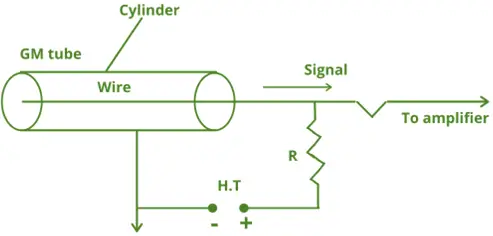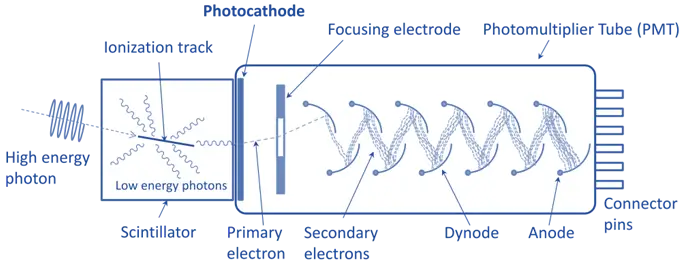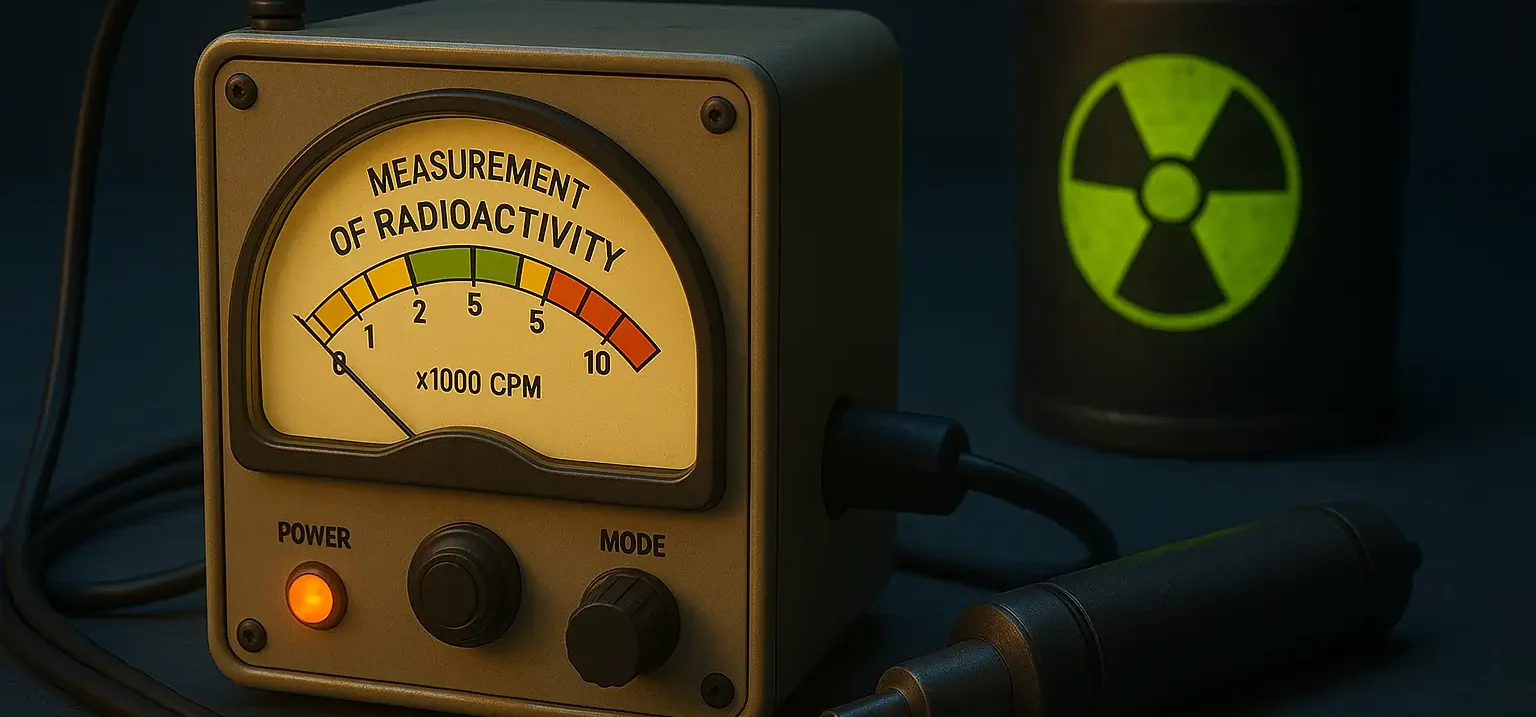- Radiopharmaceuticals contain radioactive isotopes used in nuclear medicine for diagnostic and therapeutic purposes.
- Accurate measurement of their radioactivity is essential for patient safety, regulatory compliance, and effective diagnostic or therapeutic procedures.
Principles of Measurement of radioactivity
- Radioactivity is the release of energy from unstable atomic nuclei in the form of radiation.
- Units of Radioactivity:
- Becquerel (Bq): One disintegration per second.
- Curie (Ci): An older unit where 1 Ci ≈ 3.7 × 10¹⁰ Bq.
This is a sample ad placement!
Techniques of Measurement of radioactivity in Radiopharmaceuticals
1. Geiger-Müller Counter (GM Counter)
- The GM counter is a radiation detector used for measuring ionizing radiation, including alpha particles, beta particles, and gamma rays.
- It operates by ionizing gas within a tube to produce a measurable electrical pulse.
- Key Features: Simple, durable, and capable of detecting low levels of radiation.
This is a sample ad placement!

Construction
- GM Tube: A sealed tube filled with a gas mixture, typically argon or neon, at low pressure, with a quenching agent to prevent continuous discharge.
- Cathode and Anode: The inner wall of the tube serves as the cathode, and a thin wire in the center is the anode.
- Window: A thin mica or halogen window at one end allows low-energy beta particles and alpha particles to enter.
- High Voltage Supply: Creates a strong electric field inside the tube.
- Counting Circuit: Counts electrical pulses generated by ionization events, often providing a visual or auditory indication.
Operation
- Ionization: Ionizing radiation enters the tube, ionizing the gas and creating positive ions and free electrons.
- Avalanche Effect: High voltage accelerates the electrons toward the anode, causing further ionization in an avalanche effect.
- Pulse Generation: The resulting surge in current is detected as an electrical pulse.
- Quenching: The quenching agent prevents continuous discharge, allowing the tube to reset.
- Counting: Each pulse corresponds to an ionizing event, enabling measurement of radiation intensity.
This is a sample ad placement!
Key Features and Limitations
- Sensitivity: Detects various ionizing radiation types but cannot differentiate between them.
- Dead Time: Has a brief period after each event where it cannot detect another, potentially leading to undercounting at high radiation intensities.
- Plateau Region: Must be operated within a specific voltage range for accurate measurements.
2. Scintillation Counter
- Detects ionizing radiation using a scintillator that emits light when struck by radiation.
- The light is converted into an electrical signal by a photomultiplier tube (PMT).

Construction
- Scintillator: Can be an inorganic crystal (e.g., sodium iodide doped with thallium, NaI(Tl)) or organic material. Inorganic scintillators have higher light output and better energy resolution.
- Light Guide: A transparent material that directs light from the scintillator to the photodetector.
- Photodetector: Converts emitted light into an electrical signal. Commonly uses a PMT but can also use silicon photomultipliers (SiPMs) or avalanche photodiodes (APDs).
- Shielding and Housing: Prevents external light interference and may include lead shielding to block background radiation.
This is a sample ad placement!
Operation
- Ionizing Event: Radiation interacts with the scintillator, depositing energy and causing ionization or excitation.
- Light Emission: The scintillator emits light as atoms return to their ground state.
- Light Transmission: The light is guided to the photodetector with minimal loss.
- Signal Conversion: The PMT converts light into photoelectrons, which are then multiplied to generate an electrical signal.
- Signal Processing: Electronics process the signal to extract information about the radiation’s energy, timing, and count rate.
Semiconductor Detectors
- Use semiconductor materials like silicon or germanium to directly convert ionizing radiation into an electrical signal.
- Advantages: Offer high energy resolution and are commonly used in gamma spectroscopy.
3. Dosimetry Techniques
-
Ionization Chambers
- Function: Use a gas-filled chamber with electrodes to measure ionization caused by radiation.
- Application: Used in medical procedures and environmental monitoring for dose rate measurements.
-
Thermoluminescent Dosimeters (TLDs)
- Function: Contain a material that stores energy when exposed to radiation, releasing it as light upon heating.
- Application: Commonly used for personal radiation monitoring and environmental measurements.
-
Film Badges
- Function: Use photographic film to measure radiation exposure by the degree of blackening after development.
- Current Use: Largely replaced by TLDs but still used in some settings.
This is a sample ad placement!
Thank you for reading from Firsthope's notes, don't forget to check YouTube videos!


